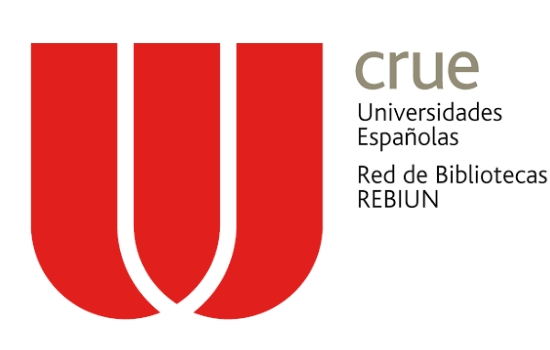Diseños didácticos y trayectorias de aprendizaje de la geometría de estudiantes sordos, en los primeros grados de escolaridad
Keywords:
Didáctica de la Geometría, Trayectorias Hipotéticas de Aprendizaje, Población Sorda, Diseños Didácticos, Experimentos de Enseñanza, ALTER-NATIVA, Geometry Didactics, Hypothetic Trajectories Learning, Deaf Population, Didactic Designs, Teaching ExperimentsAbstract
Resumen
Este artículo presenta resultados de investigaciones sobre la relación trayectorias de aprendizaje y diseños didácticos para la enseñanza inicial de la geometría a estudiantes sordos. La problemática de investigación vincula a un marco de referencia de diseños didácticos para todos y a un marco metodológico de investigación de diseño a partir de experimentos de enseñanza, las preguntas: ¿Qué exigencias hay que satisfacer cuando se desarrollan diseños didácticos para todos en educación matemática? ¿Qué tipos de trayectorias reales de aprendizaje surgen cuando se vinculan en las trayectorias hipotéticas de aprendizaje condiciones de aprendizaje de las poblaciones sordas? El desarrollo de la Trayectorias de Aprendizaje se llevó a cabo en un aula multigradual en la que participaron 10 estudiantes de tercer grado (Hipoacúsico y sordos profundos) cuyas edades oscilaban entre los 9 y 12 años.
Abstract
This article presents research results on the relation between learning trajectories and didactic designs for teaching initial geometry to deaf students. This research links a theoretical frame of didactic designs for everyone with a methodological frame of research design based on teaching experiments with the following questions: What requirements are necessary to satisfy when didactic designs for everyone in mathematics are developed? What kind of real learning trajectories arise when the learning condition of the deaf population is connected with the hypothetical learning trajectories? The development of the Learning Trajectories took place in a classroom with students of different grades, 10 students (deaf and Hard of Hearing) of third grade participated in the experiment, the ages of the students were between 9 and 12 years.
Downloads
References
Augusto, J., Adrian, J., Alegría, J., & Martínez, R. (2002). Dificultades lectoras en niños con sordera. Psicothema, 14(4), 746-753.
Clements, D. H., & Samara, J. (2009). Early childhood mathematics education research. New York: Routledge.
Cobb, P., & Gravemeijer, K. (2008). Experimenting to support and understand learning processes. En A. E. Kelly, R. A. Lesh & J. Y. Baek (Eds.), Handbook of design research methods in education: Innovations in science, technology, engineering, and mathematics learning and teaching (pp. 68–95). New York: Routledge
Confrey, J. (2006). The evolution of design studies as methodology. En R.K. Sawyer (Ed.), The Cambridge Handbook of the Learning Sciences (pp. 135-152). Nueva York: Cambridge University Press.
Costanzo, A. (2001). Trabajo comparativo del aprendizaje sistemático de las matemáticas entre el segundo ciclo de la EGB normoyente y el segundo ciclo de la EGB oralista para niños sordos (Tesis doctoral). Universidad del Rosario, Colombia.
DANE. (8 de septiembre de 2006). Censo General 2005. Discapacidad. Obtenido de sitio Web dane.gov.co: http://www.dane.gov.co/files/censo2005/discapacidad.pdf.
Duval, R. (2004). Semiosis y pensamiento humano. (M. Vega, Trad.) (2. a ed.). Cali: Merlín I.D. (Obra original publicada en 1995)
Erting, C. (1994). The deaf Way. Washington. DC: Gallaudet University Press.
Fernández, E., Díez, M., León, D., Martín, M., & Navas, N. (2005). Propuesta curricular de la Lengua de Signos Española en el Sistema Educativo. . II Congreso Nacional de Educación de las Personas Sordas: "Educar en la diversidad" (pp. 1). Valladolid: Fundación CNSE
León, O., Bonilla, M., Romero, J., Gil, D., Correal, M., Avila, C., Bacca, J., Cavanzo, A., Guevara, C., Saiz, M., García, R., Saiz, E., Rojas, N., Peralta, M., Flores, W., & Márquez, A.
(2013). Referentes curriculares con incorporación de tecnologías para la formación de profesorado de matemáticas. México D.F.: Universidad Pedagógica Nacional.
Lewis, S. (1996). The reading achievements of a group of severely and profound impaired school leavers educated within a natural aural approach. The British Teachers of the Deaf, 20, 1-7.
Kelly, A. & Lesh, R. (2000). Handbook of research design in mathematics and science education. Nueva Jersey: Lawrence Erlbaum Associates.
Marchesi, A. (1987). El desarrollo cognitivo y lingüístico de los niños sordos. Perspectivas educativas. Madrid: Alianza.
Ministerio de Educación Nacional-Instituto Nacional para Sordos – Federación Nacional de Sordos Colombianos. MEN-INSOR-FENASCOL. (1998). Orientaciones Generales para la atención Educativa de las personas con limitación auditiva. Bogotá: MEN.
Oviedo, A. (2001). Algunas reflexiones acerca de las personas Sordas y sus lenguas. En L. Patiño, A. Oviedo. & B. Gerner (Eds.), El estilo sordo. (Pp. 189-205). Cali: Universidad del Valle.
Ramírez, P. & Castañeda, M. (2003). Educación bilingüe para sordos. Bogotá: MEN-INSOR.
Sánchez, C. (1990). La increíble y triste historia de la sordera. Caracas: Ceprosord.
Sarmiento, A. (2011). La situación de la educación en Colombia. Bogotá: Gente nueva Editorial Ltda.
Sarama, J., Clements, D. H., & Vukelic, E.B. (1996). The role of a computer manipulative in fostering specific psychological/mathematical processes. En E. Jakubowski, D. Watkins & H. Biske (Eds), Proceedings of the Eighteenth Anual meeting of the North American chapter of the International Group for the Psychology of Mathematics Education (pp. 567-572). Columbus, Ohio: Eric Clearinghouse for Science.
Sawyer, R. (2006). The New Science of Learning. En R.K. Sawyer (Ed.), The Cambridge Handbook of the Learning Sciences (pp. 1-18). Nueva York: Cambridge University Press.
Simon, M. & Tzur, R. (2004). Explicating the Role of Mathematical Tasks in Conceptual Learning: An Elaboration of the Hypothetical Learning Trajectory. Mathematical thinking and learning, 6(2), 91-104.
Skliar, C. (1997). La educación de los sordos una reconstrucción histórica, cognitiva y pedagógica. Mendoza: Ediunc.
Steffe, L. & Thompson, P. (2000). Teaching experiment methodology: Underlying principles and essential elements. En A.E. Kelly & R. A. Lesh (Eds.), Handbook of research design in mathematics and science education. (pp. 267-306). Mahwah: NJ: LAE.
Stockseth, R. (2002). Comprensión de la sintaxis española por lectores sordos chilenos. Revista Signos Estudios de Lengua y Literatura y Ciencias del Lenguaje. Universidad Católica de Valparaíso, 35, 271-290.
Valdés, L. (Comp.). (2000). La búsqueda del significado. Madrid: Tecnos.
Downloads
Published
How to Cite
Issue
Section
License
Once the article is accepted by the Latin American Journal of Ethnomathematics, the authors cede the rights to publish and distribute the text electronically, including storing it and making it available online.
The authors can distribute their own material without soliciting permission from the Latin American Journal of Ethnomathematics, whenever mentioning that the original version is found at http://www.revista.etnomatematica.org
Copyright © 2008, Latin American Journal of Ethnomathematics
All contents of the Latin American Journal of Ethnomathematics are published under the _ and can be used freely, giving credits to the authors and to the Journal, as established by this license.











